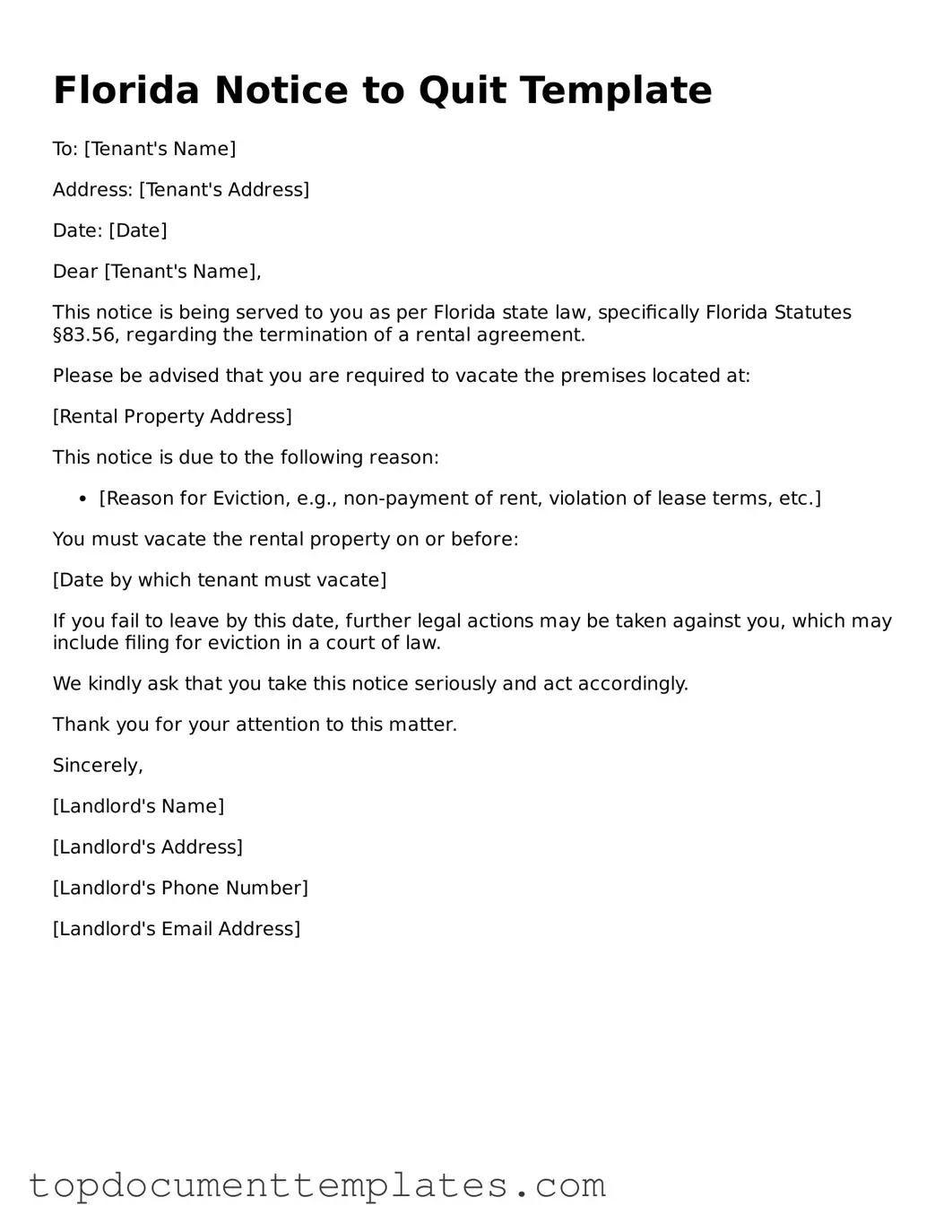In Florida, the Notice to Quit form serves as an essential document in the landlord-tenant relationship, particularly when a landlord seeks to terminate a lease agreement. This form is a formal notification that informs a tenant of the landlord's intention to reclaim possession of the rental property. It typically outlines the reason for the termination, which can range from non-payment of rent to violation of lease terms. The notice must be delivered in a specific manner, ensuring that the tenant receives it in a timely fashion. Importantly, the Notice to Quit must comply with Florida's laws regarding notice periods, which can vary based on the reason for eviction. Understanding the intricacies of this form is crucial for both landlords and tenants, as it lays the groundwork for any potential legal proceedings that may follow. By adhering to the proper procedures, landlords can protect their rights, while tenants are afforded the opportunity to address the issues raised before any further action is taken.
